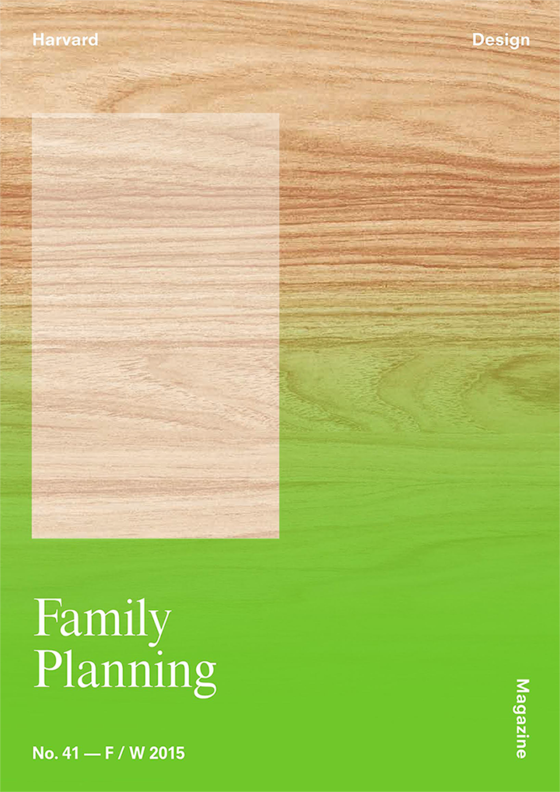A Theory of Everything
41: Family Planning

As family configurations evolve and atomize, and “exceptions” become the norm—divorced, blended, solo, cooperative, childless, single-parent, widowed, queer, aging, migrant, transnational, foster, adoptive, multigenerational—the material construct of our homes, institutions, and cities asks to be reconsidered.
This issue of Harvard Design Magazine is based on the premise that we need to imagine new, different spaces for living together. It confronts the persistent myth of the nuclear family and reconsiders the architectures that contain and reproduce it. It examines how family realities influence, and are influenced by, the spaces we inhabit, and the patterns of our existence in cities, suburbs, and the countryside. Do these spaces correspond to the way we live, or want to live? Do they enable and support, or dictate and confine? And how do other social constructs—corporations, institutions, communities—mirror or redefine familial configurations?
“Family Planning” looks at spaces of home and belonging, and notions of property, ownership, and connection, addressing questions of what constitutes a family and the legal overtones of inclusion, citizenship, and basic rights. In doing so, it interrogates and reimagines the space of the family unit, presenting alternatives, past and future, for diverse family configurations to flourish in the built environment.
Jennifer Sigler
Daphne Spain
Claire Barliant
Saskia Sassen
Jacqueline Bhabha
Ou Ning
Mirca Madianou
Sam Jacob
Katharine Silbaugh
Angie Keefer
McKenzie Wark
Alex Kitnick
Christopher Herbert, Jennifer Molinsky
Vyjayanthi Venuturupalli Rao
Christina E. Crawford
Jie Li
Rachel Silvey, Rhacel Salazar Parreñas
Jeremy Till
Niklas Maak
Martino Tattara, Pier Vittorio Aureli
Michael Bronski
Lynn Spigel
Stephen Cairns
Delia Duong Ba Wendel, Michael Hardt
Bijoy Jain, Mohsen Mostafavi
Martti Kalliala, Ursula K. Le Guin
Dolores Hayden, Hilde Heynen
Drucilla Cornell, Lisa Haber-Thomson
LaToya Ruby Frazier
Sarah Lynn Lopez
Susanne Schindler
Brent Pilkey
Mohsen Mostafavi
David Huber
Faryar Javaherian
James Voorhies
Eva Díaz
Fabrizio Gallanti
Ellen J. Pader
Robert Wiesenberger
Lori Brown
Erik Kessels
Daniel Rauchwerger, Megan Panzano
Michiel van Iersel, René Boer